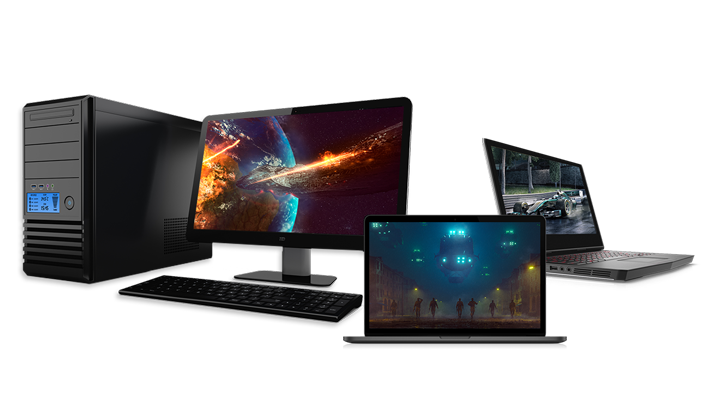The Evolution of Desktop and Laptop Computers: Power and Productivity at Your Fingertips

Introduction
In the realm of technology, desktop and laptop computers have played a pivotal role in shaping our digital lives. From the early days of massive mainframe computers to the sleek and portable machines we use today, the evolution of these devices has been marked by continuous innovation and incredible advancements. This article delves into the transformation of desktop and laptop computers, highlighting their increasing power and productivity.
The Power of Processing
It is truly remarkable how the processing power of desktop and laptop computers has evolved over time. From the days of limited computing capabilities to today's multi-core processors, these machines can handle complex tasks with ease. Modern CPUs, along with advancements in graphics processing units (GPUs), enable seamless multitasking, smooth rendering of high-definition graphics, and the ability to run resource-intensive software and games.
Productivity on the Go
One of the significant advantages of laptops is their portability, allowing users to be productive on the go. Unlike their stationary counterparts, laptops offer the convenience of mobility without compromising performance. Whether it's working on spreadsheets, creating presentations, or editing multimedia content, laptops provide the flexibility to work from anywhere, be it a coffee shop, airport lounge, or the comfort of your own home.
Desktops: Powerhouses of Performance
While laptops excel in portability, desktop computers remain unrivaled in sheer performance and customization options. With their larger form factor, desktops can accommodate more powerful hardware components, such as high-end processors, dedicated graphics cards, and extensive storage solutions. These factors make desktops the go-to choice for professionals in fields like video editing, 3D rendering, and gaming, where raw processing power is paramount.
Identifying Your Device
Identifying the make and model of a desktop or laptop computer is usually straightforward. The manufacturer's name is typically displayed prominently on the device's exterior, and the specific model number can often be found on the back, bottom, or inside the battery compartment (for laptops). Additionally, the operating system's settings menu provides information about the device, including the model number and specifications.
The Future of Desktop and Laptop Computers
As technology continues to advance, the future of desktop and laptop computers looks promising. We can expect even more powerful processors, increased storage capacities, and enhanced graphics capabilities. Additionally, advancements in cloud computing and virtualization technologies will further bridge the gap between desktop and laptop experiences, allowing for seamless integration and synchronization across devices.
Conclusion
Desktop and laptop computers have come a long way, revolutionizing the way we work, create, and connect. Their increasing power and productivity have made them indispensable tools in our daily lives. Whether it's unleashing the full potential of desktops or enjoying the flexibility of laptops, these devices continue to shape the digital landscape. As we look ahead, the future holds even more exciting possibilities, further cementing the importance of desktop and laptop computers in our ever-evolving technological journey.
Here are three key points on how to handle and care for laptops and desktop computers:
- Proper Handling and Transportation:
- When carrying a laptop, always use a protective case or sleeve to prevent scratches and minor damage.
- Avoid placing heavy objects on top of laptops or applying excessive pressure on the screen or keyboard.
- When moving a desktop computer, ensure all cables are properly disconnected and secured. Use caution to prevent any damage to the internal components.
- Regular Cleaning and Maintenance:
- Keep the keyboard and touchpad of laptops clean by using compressed air or a soft brush to remove dust and debris.
- Clean the desktop computer's exterior using a soft, lint-free cloth. Avoid using harsh chemicals or abrasive materials that could damage the surface.
- Regularly clean the vents and fans of both laptops and desktops to prevent overheating. Use compressed air to remove dust buildup, which can obstruct airflow.
- Power and Battery Management:
- For laptops, avoid leaving them plugged in and charging continuously, as this can degrade the battery over time. Allow the battery to discharge partially before recharging.
- Desktop computers should be connected to a surge protector or uninterruptible power supply (UPS) to protect against power surges and outages.
- Shut down laptops and desktops properly when not in use, rather than relying on sleep or hibernation mode. This helps conserve power and prevents unnecessary strain on the hardware..
How much will it cost?
| Repairs services | Price |
|---|---|
| Get answers and advice from people you want it from (consultation) | Free |
| Battery Replacement | Depend on device |
| Screen Replacement | Depend on device |
| General Repair | Depend on device |
| water damage | From 5k |
